Leopards and Lions again in Etosha.
Windhoek to Victoria Falls safari August 2006
13 days fully guided ground only accommodation based safari.
Visiting Etosha National Park, Popa Falls and Mahango, Game Park, Chobe National Park and Livingstone

In 2005 we ran a personally guided safari including Moremi, Savuti, Chobe and Livingstone, for two keen photographers from Turkey. They enjoyed themselves so much that one of them returned in 2006, to share his experience of Africa with his family and two more friends.
Travelling together as an exclusive group of five, they chose our Windhoek to Victoria Falls safari for its variety and excitement.

We are always confident that we will see lions in Etosha National Park, but leopard sightings are becoming increasingly common, thanks to the skill and experience of our guides running our safaris. This trip was no exception, providing some of our best leopard viewing this season. The area where we are seeing leopards with amazing regularity is around Halali very close to Goas waterhole. One stretch of bush often reveals a female leopard who commonly hunts along the road, on this safari she was nowhere to be seen, but was replaced instead by a beautiful big male. The key to finding leopards in this thick bush is to drive very slowly, perhaps no more than ten kilometres per hour, and with this in mind Alan Baird, the guide, managed to find this elusive animal. The remarkable thing about the leopards in this area is that they are becoming increasingly more relaxed with vehicles and we were able to watch him sit within five metres of the vehicle, wash himself, and doze for a good hour and a half without him being in the least bit concerned. Lions were also seen very frequently throughout Etosha as well as the usual excellent black rhino sightings at Okaukuejo and Halali waterholes at night.
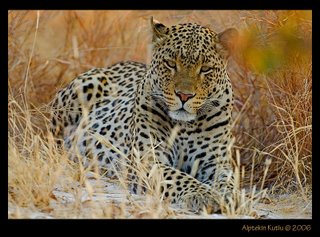
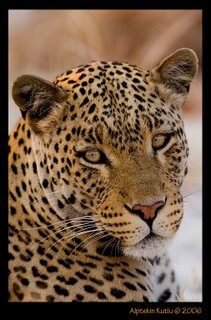
Leaving the dry and dusty environs of Etosha we moved on to the Popa Falls area, a complete contrast as it borders the Okavango River. Mahango Game Reserve, in this part of Northern Namibia, is seldom visited, possible because it is only a small reserve. However, the range of animals that we see here is always stunning and certainly one of Mahango’s main attractions. On both game drives good sightings of Roan antelope and Sable antelope were possible. These very nervous antelope are always difficult to photograph but their profusion allowed a number of stunning action shots to be taken.

The Chobe River front never disappoints for elephant and hippo, especially at this time of year. In the afternoon in particular huge herds of elephant come down onto the food-plain, exposed by low water, to drink and graze on the lush grasses. Hippo form large pods, both in the main channel, and in the many small lagoons that have been formed by the receding river. Despite herds of buffalo which number many hundreds the lion population seems to have declined dramatically along the river front area of Chobe. No one seems to be able to offer a complete explanation but the area was badly hit by an anthrax outbreak last year and there is also a suggestion that they have just walked out of Botswana and into Zimbabwe. Hopefully the one large male and small group of females that remain will take full advantage of their monopoly and soon expand their pride with the birth of new cubs.
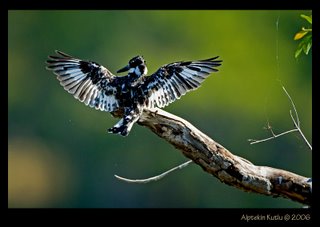
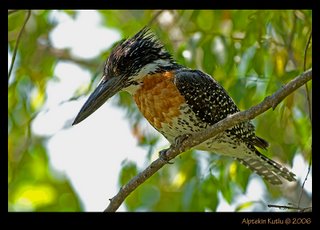
After crossing the Zambezi and entering Zambia, the trip finished at Liyoyelo Farm, our base in Livingstone. Here the guests stayed at Bushbuck River House, which is located on the banks of the Zambezi. The house is ideal for families as there is a swimming pool and tree house overlooking the river. For our keen photographers many hours could be spent walking in the grounds, along the river bank and on the nearby island in the middle of the Zambezi. Here the wide variety of birds provides excellent subject matter and the farm is also visited by hippo, elephant, buffalo, water buck and of course bush buck. Otters can be found in the river and the fresh Zambezi Bream are often a welcome addition to the menu. This is a peaceful location, just a short drive from town, ideal for a last chance to relax before returning home.
We would like to thank Alptekin Kutlu for his splendid selection of photographs that illustrate this Africa Diary report.
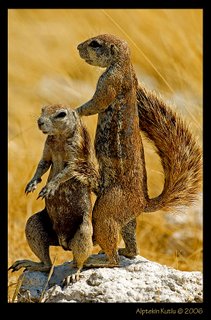
13 days fully guided ground only accommodation based safari.
Visiting Etosha National Park, Popa Falls and Mahango, Game Park, Chobe National Park and Livingstone

In 2005 we ran a personally guided safari including Moremi, Savuti, Chobe and Livingstone, for two keen photographers from Turkey. They enjoyed themselves so much that one of them returned in 2006, to share his experience of Africa with his family and two more friends.
Travelling together as an exclusive group of five, they chose our Windhoek to Victoria Falls safari for its variety and excitement.

We are always confident that we will see lions in Etosha National Park, but leopard sightings are becoming increasingly common, thanks to the skill and experience of our guides running our safaris. This trip was no exception, providing some of our best leopard viewing this season. The area where we are seeing leopards with amazing regularity is around Halali very close to Goas waterhole. One stretch of bush often reveals a female leopard who commonly hunts along the road, on this safari she was nowhere to be seen, but was replaced instead by a beautiful big male. The key to finding leopards in this thick bush is to drive very slowly, perhaps no more than ten kilometres per hour, and with this in mind Alan Baird, the guide, managed to find this elusive animal. The remarkable thing about the leopards in this area is that they are becoming increasingly more relaxed with vehicles and we were able to watch him sit within five metres of the vehicle, wash himself, and doze for a good hour and a half without him being in the least bit concerned. Lions were also seen very frequently throughout Etosha as well as the usual excellent black rhino sightings at Okaukuejo and Halali waterholes at night.


Leaving the dry and dusty environs of Etosha we moved on to the Popa Falls area, a complete contrast as it borders the Okavango River. Mahango Game Reserve, in this part of Northern Namibia, is seldom visited, possible because it is only a small reserve. However, the range of animals that we see here is always stunning and certainly one of Mahango’s main attractions. On both game drives good sightings of Roan antelope and Sable antelope were possible. These very nervous antelope are always difficult to photograph but their profusion allowed a number of stunning action shots to be taken.

The Chobe River front never disappoints for elephant and hippo, especially at this time of year. In the afternoon in particular huge herds of elephant come down onto the food-plain, exposed by low water, to drink and graze on the lush grasses. Hippo form large pods, both in the main channel, and in the many small lagoons that have been formed by the receding river. Despite herds of buffalo which number many hundreds the lion population seems to have declined dramatically along the river front area of Chobe. No one seems to be able to offer a complete explanation but the area was badly hit by an anthrax outbreak last year and there is also a suggestion that they have just walked out of Botswana and into Zimbabwe. Hopefully the one large male and small group of females that remain will take full advantage of their monopoly and soon expand their pride with the birth of new cubs.


After crossing the Zambezi and entering Zambia, the trip finished at Liyoyelo Farm, our base in Livingstone. Here the guests stayed at Bushbuck River House, which is located on the banks of the Zambezi. The house is ideal for families as there is a swimming pool and tree house overlooking the river. For our keen photographers many hours could be spent walking in the grounds, along the river bank and on the nearby island in the middle of the Zambezi. Here the wide variety of birds provides excellent subject matter and the farm is also visited by hippo, elephant, buffalo, water buck and of course bush buck. Otters can be found in the river and the fresh Zambezi Bream are often a welcome addition to the menu. This is a peaceful location, just a short drive from town, ideal for a last chance to relax before returning home.
We would like to thank Alptekin Kutlu for his splendid selection of photographs that illustrate this Africa Diary report.

 Nomad: Africa Diary
Nomad: Africa Diary

